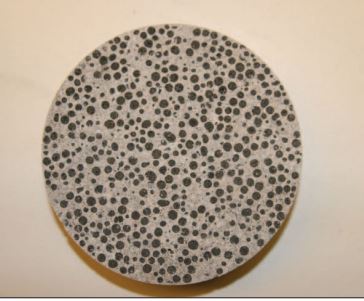Self Healing Concrete is a class of smart material that has the structurally incorporated ability repair damages caused by mechanical usage over time.
Related Article: Self Compacting Concrete
Types of Self Healing Concrete
There are two different types of self-healing concrete
- Biotic
- Abiotic
Biotic Concrete
In biotic concrete we use bacteria .so it called as bacteria concrete.
The bacteria used for self-healing of cracks are acid-producing bacteria. The bacteria act as a catalyst in the crack healing process. It is preferred when the concrete structure have access to water or moisture.
Various bacteria used are as following:
- bacillus pseudofirmus
- bacillus balodurans
- bacillus cohnil
- bacillus paterurizing
- bacillus spaericus
- escherichia coil
Mechanism of bacteria
When the cracks appear in the concrete, the water seeps in the cracks, the spores of bacteria germinate and starts feeding on the calcium lactate is converted to insoluble limestones, the insoluble limestone starts to harden us filling automatically without any external aid.
Abiotic Concrete
These are chemical compounds. It is preferred when there is no access to moisture in a structure. Following table shows the efficiency of abiotic.
Some of the chemicals are cyanoacrylate, epoxy, polyurethane (PU), methyl methacrylate(MMA), dicyclopentadiene(DCPD), Na2Sio3 etc. are the healing agents which are mixed with other components like water.

Method for preparing Self-Healing concrete
- Direct method
- Encapsulation.
Direct method
In this method, we add healing agents directly to the cement mixture while making concrete motor in a proper ratio of preference. The ratio of healing agent differs according to the cement used.
Encapsulation
In this method, a self-healing agent is capsulated using a different type of shell material and geometric properties of capsule. If capsule size is more, it affects the workability of cementitious material. Adding microcapsules in some cases can render the concrete mixture more workable. Embedded capsules need to endure the heat generated in the early hydration stage and highly alkaline cementitious environment throughout the service life.
Most of the shell material can endure the hydration heat. For organic shell materials, most of them demonstrate good stability in a highly alkaline environment. For inorganic shell materials, since glass may induce an alkali-silica reaction in concrete motor, ceramics or modified glass are preferred.
Advantages of Self-Healing concrete
- It can last decades or centuries. This is the biggest advantage of self-healing concrete. This ensures that we shall never have to replace your concrete surface again during its lifespan.
- Self -healing concrete decreases concrete maintenance. In normal concrete, you have to fill and seal the cracks. But you do not have to do or worry about this with self-healing concrete
- Improved in compressive strength of concrete.
Disadvantages of self -healing concrete
- One of the biggest disadvantages currently of it is cost. It is expensive compared to normal concrete. Maybe in future, the cost will reduce when self -healing concrete will become common. Now it is quite rare.
- Not many contractors know how to use this product yet. Because it is a new product many people do not have an idea of using it.
- There is no code available to standardize the self-healing concrete.
Conclusion
Microbial concrete technology has proved to be better than many conventional technologies because of its eco-friendly nature and self-healing abilities. It increases the life span of the structure.
Also Read:


Pingback: 10 Sustainable Building Materials For Greener Architecture • Terra Movement | Artivism